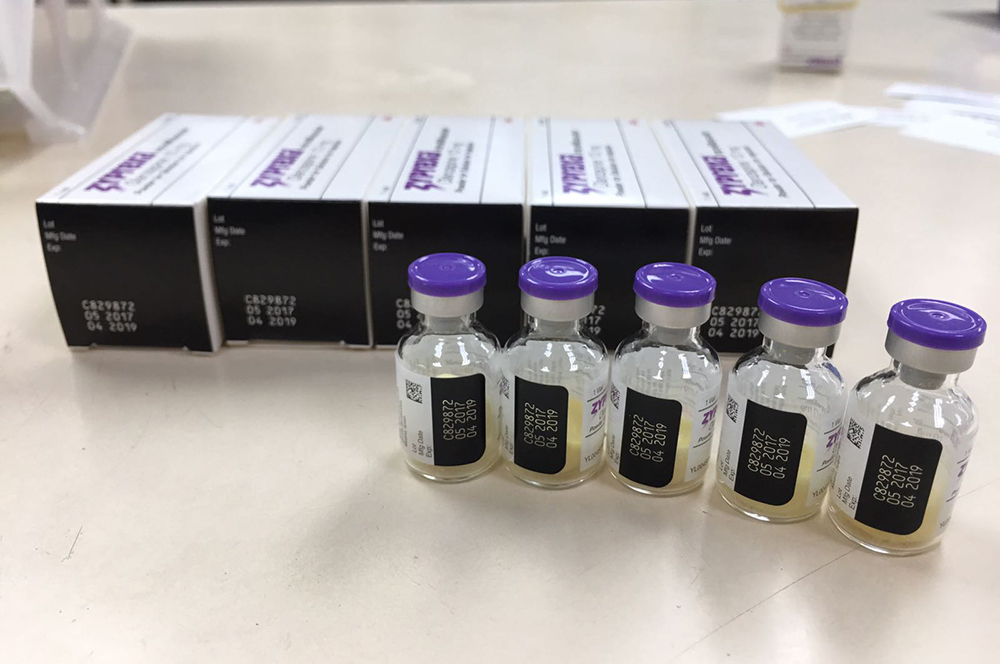May 2020 | Volume 21 No. 2
Research Lessons from the Emergency Room
Research is critical to the pharmacy profession and drug dispensation, but most pharmacy students do not get a deep, first-hand insight into that process. Dr Esther WY Chan of the Department of Pharmacology and Pharmacy set out to change that by incorporating undergraduate learning into a randomised clinical trial (RCT).
The RCT compared two different treatments – sedative agents and anti-psychotic drugs – in managing acute agitation or behavioural emergencies in Hong Kong hospitals. These emergencies may be due to mental illness and/or alcohol or drug intoxication and occur fairly frequently in A&E.
“RCTs are necessary to ensure that drugs are safe and effective for drug registration. Following registration, RCTs also provide information on how well drugs are working and to what extent they cause side effects in real-world practice. I wanted the students to understand the importance of this research and its role in pushing the profession forward,” she said.
Dr Chan invited final-year Bachelor of Pharmacy students and students on summer programmes to join her RCT. They were assigned to one of six sites where suitable patients were administered with either a sedative, midazolam, or one of two anti-psychotic drugs, haloperidol or olanzapine. She said: “The objective was to provide some answers on what type of dosing and administration would be suitable and how the different options compared.”
Moreover, there was a broader learning opportunity. “I told the students at the beginning that we cannot predict how many patients will be recruited and it may not be many, but they will also learn about everything else that is part of the clinical setting in a hospital,” she said.

Preparation of study drugs for use in clinical trials.
Eye-opening
Students first did a literature review and background preparation to gain awareness of the many procedures and considerations involved in recruiting patients, including documentation and approvals from the Department of Health, ethics committees of Hospital Authority and patients. The students then did shifts waiting in A&E rooms for potential cases.
Not every patient with a behavioural emergency could be included, for example pregnant women or patients with a previous reaction to drugs were excluded. The students observed discussions between nurses and doctors on whether to include a patient and noted down important points, the obtaining of patient consent, the administration of the drug, and the patient’s response during their stay in the A&E. They were also tasked with reminding nurses and doctors when it was time to reassess the patient and determine the need for further drug dosing if necessary.
Hinson Lin Hin-sang, who graduated with a Bachelor of Pharmacy degree last year, participated in the RCT programme in 2017 because he wanted to learn more about research outside the laboratory. He was based in the A&E department of Queen Mary Hospital and said the experience was eye-opening.
“The patients were sometimes very agitated and required physical restraint. It was the first time I had seen patients like this and it was quite shocking when they kept shaking and shouting even after being restrained. This made me realise the importance of chemical sedation for protecting both the patients and healthcare professionals,” he said.
Miriam Leung, who graduated in 2018, joined the RCT in her final year. She was surprised by the lengthy process involved in recruiting eligible patients, but grateful for the opportunity to be in a hospital setting. “I gained valuable insight into how doctors and nurses work in the A&E department, which helped me later when I practised as a hospital pharmacist,” she said. She currently works as a pharmacist with a non-governmental organisation.
Study results
For Dr Chan, outcomes like these confirm the teaching value of involving students in RCTs. “This was an opportunity for them to appreciate that behavioural emergencies are emergencies just as much as heart attacks or strokes, which is important because mental health tends to be somewhat neglected in Asia,” she said.
A total of 20 students, including 12 on summer programmes and a PhD student, participated in the RCT. Apart from observing patients selected for the trial, they also recorded those who were excluded, which is an important requirement in the final report of the study and journal publication.
The RCT ended in September 2019 after five and a half years and Dr Chan is now circulating the manuscript for publication. The drug allocation was not revealed to students, patients and hospital staff at the time of patient recruitment but unveiled when the study ended. Midazolam was shown to be a little more effective for managing behavioural emergencies. Both anti-psychotics were effective and safe but olanzapine, a newer drug, performed somewhat better than haloperidol. This supported a key goal of the study, which was to show that olanzapine was a viable alternative for Chinese patients.
“The students involved in this project now have a basis for understanding not only how drugs are tested prior to drug registration but importantly, how registered drugs can be further assessed for safety and effectiveness. This is important first-hand experience,” Dr Chan said.
This was an opportunity for the students to appreciate that behavioural emergencies are emergencies just as much as heart attacks or strokes.

DR ESTHER WY CHAN

